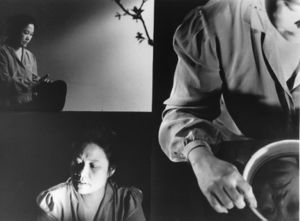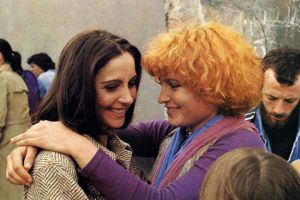Dorothy: Including Ourselves: The Role of Female Spectators in Agnès Varda's "Le Bonheur" and "L'Une chante, l'autre pas"
Including Ourselves: The Role of Female Spectators in Agnès Varda's "Le Bonheur" and "L'Une chante, l'autre pas" – by Ruth Hottell
The article based on the media theory that in order for spectators to enjoy the pleasure in movie, they need to identify with subjects in it. Given that most films are centered around white male, other spectators might adapt strategies to enjoy or protest (according to hooks).
The writer then moves on to discuss certain related theorists and their thoughts on the problematic nature of mainstream cinema. First Hottell discusses two other feminist film theories, that are - Annett Kuhn who suggested that we must first understand how ‘mainstream cinema manipulates image’ (54), and arguing that to deconstruct mainstream representation can produce essential knowledge that fuels actions. Another theorist that the writer mentioned was Sandy Flitterman-Lewis, who suggested the idea of enonce (how things are presented) and enunciation (what is actually said) – and conclude that in mainstream cinema the way of presenting serves as a attractive wrapping paper for the ideology inside.
Next the writer moves on to theorists who also explore film as a medium to put the theories in practice. For instance, Trinh. T. Minh-ha’s film ‘Surname Viet, Given Name Nam’ (1989) as talked about her identity as a Vietnamese American. From there the writer also mentioned Judith Mayne and Flitterman-Lewis, to suggest the possibility to seek voice for the Other in film. And these two theories also both researched on American and French movie, that leads to the subject of this essay, the French feminist cinema.
Hottell then posed the question that concerned in the feminist debate – Is narrative pleasure in nature repressive? If it is possible to invent narrative pleasure to be inclusive?
Before discussing Agnes Varda’s works, Hottell first started with introducing us to Marguerite Duras who refused to create a film for mainstream or average viewers. She insisted that to reach the general public would make her losing the creative self in process.
Next Hottell mentioned Chantal Akerman whose position is more fluid. In Jeanne Dielman, 23 Quai du Commerce, 1080 Bruxelles she used many long static shots reveals the violence in a subtle way, subverting the traditional narrative, instead, she invited audience to actively practice in the viewing process. Same applies to News from Home, in which Akerman did not explicitly shows her anxiety on screen, but instead using narrative and slow static shots in New York, audience participate and reflect along with her. Then Hottell also suggested a few more examples that show her taking another path that bridges also mainstream audience, while remained experimental in her works.
Finally Hottell started exploring Agnes Varda’s works, using her two works Le Bonheur (1965) and L’Une chante, l’autre pas (1977) as examples. Varda, unlike Duras, once stated film is popular art and it is still necessary to keep the mainstream audience in mind while changing the image of woman.
Varda positions herself and even her families and friends in her film – as a way to admit her own involvement in the film (as the director), and thus in a way also to admit recognize the Other. It was done in form of Varda’s own narrative voice, or actress looking directly to the camera.
Another strategy that Varda applied is to alter or subvert traditional narrative. She celebrates difference between “self and other.” One example is to subtly illustrate the bounding between two different women in L’Une chante, l’autre pas. She embraces the friendship between women characters, in contrast to the mainstream “male-centered buddy movie”.
Varda also offers questions in her films, rather than answers, that effectively include audience in the film, being actively participate in the film. Putting female characters in the center of narrative provokes audience to actively view the film.
In conclusion, the writer suggests that the presence of various layers within Varda’s works – individual, collective and theoretic levels.


